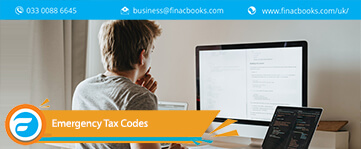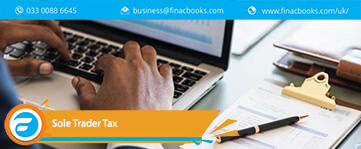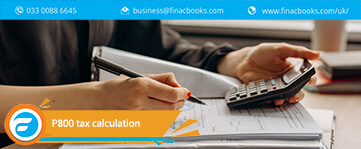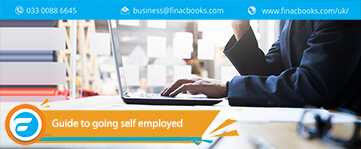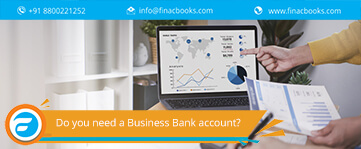Introduction to Balance Sheet
The Balance Sheet is a financial statement that summarises your business’s assets, liabilities, and shareholders’ equity at a certain point in time. It provides insight into your company’s financial health at the time the accounts were created by comparing what is owned against what is owed.
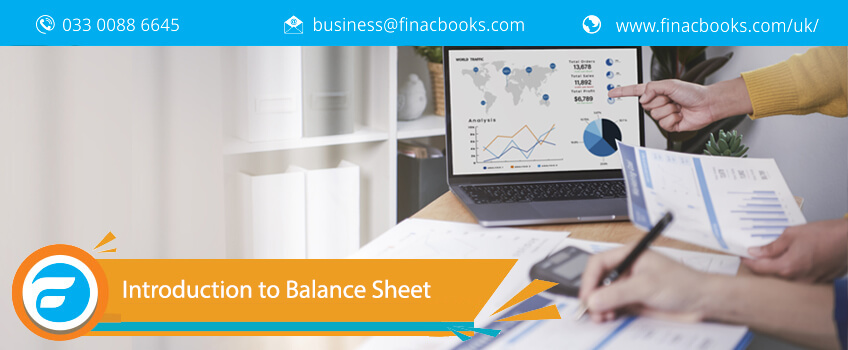
The balance sheet is composed of two columns: assets and liabilities.
An asset is something that your ecognizedn owns or that provides you with a benefit. An asset will be one of the following:
- Fixed assets – These are long-term assets such as land, factories, and vehicles.
- Current assets – They are assets with a shorter life expectancy, such as inventory, petty cash, and cash in the bank.
A liability is an obligation, most commonly the arising of a debt that must be repaid. Liability will be one of the following:
- Long-term liabilities – debts owed but not repaid within the same year.
- Current liabilities – debts owed to be repaid within a year.
What are Assets?
Assets are the valuable things owned by the business. They are the resources acquired through transactions & have a future economic value. There is a long list of assets that are shown on the asset side of the balance sheet. Some of them are given below –
- Cash
- Land
- Building
- Machinery
- Goodwill
- Inventory
- Petty cash
- Accounts receivable
- Supplies
- Temporary investments
It also includes the costs paid in advance, such as prepaid insurance, prepaid advertising, prepaid rent & prepaid legal fees etc.
Normally, assets accounts have debit balances, but some asset accounts also have credit balances such as contra assets. Contra assets are asset accounts with credit balances. Some of the contra asset accounts include –
- Allowance for doubtful accounts
- Accumulated depreciation – Building
- Accumulated depreciation – Equipment
- Accumulated depreciation – Land improvement
- Account depletion
What is Liability?
Liability is an amount that a company owes to other parties such as suppliers, banks, creditors etc. In other words, it is an amount borrowed by a company to support its business activities. There is a long list of the company’s liabilities which are shown on the liabilities side of a balance sheet. Some of them are given below –
- Accounts payable
- Salaries payable
- Wages payable
- Notes payable
- Interest payable
- Income tax payable
- Unearned revenue
- Bonds payable
- Customer deposits
- Other accrued expenses payable
Normally, liability accounts have credit balances. Contra liabilities are liability accounts with debit balances. Some of the contra liability accounts include –
- Discount on bonds payable
- Discount on Notes payable
- Bond issue costs
- Debt issue costs
What is Owner’s Equity?
Owner’s equity means assets minus liabilities. In other words, the owner’s equity represents the business owner investment minus the owner’s withdrawal from the business. In the case of Sole-proprietorship, the word “Owner’s equity” needs to be used on the right side of the company’s balance sheet, whereas the word “Stockholder’s equity” needs to be used on the right side of the company’s balance sheet in the case of a company. Some of the examples of stockholder’s equity are given below –
- Common stock
- Preferred stock
- Retained earnings
- Paid in capital from treasury stock
- Paid-in capital in excess of par value
- Accumulated other comprehensive income etc
Normally both owner’s, as well as stockholder’s equity, have credit balances but some owner equity accounts also have debit balances such as contra owner’s equity accounts. Contra owner’s equity accounts are owner’s equity accounts with debit balances.
Classification of Assets and liabilities on the Balance Sheet
CURRENT ASSETS
Current assets are classified into the following categories:
- Stock – can be further classified as raw materials, work in progress, and finished goods. Maintaining an appropriate stock level can be challenging. Too much and cash becomes trapped for an extended period of time, plus you risk stock becoming obsolete. If you have insufficient inventory, you risk losing sales owing to lengthy wait times for delivering goods to the consumer.
- Trade Debtors – customers to whom you provided credit but have not yet received payment. Keep an eye on these to verify that customers pay when they are supposed to. Pursue any late payments quickly but respectfully.
- Prepayments – goods/services for which you have been invoiced but have not yet received payment. For example, annual insurance premiums are paid in advance.
- Accrued income – often in combination with prepayments. Work that you have completed (in part) but have not yet invoiced to the customer, possibly because the job is not yet complete.
- Other Debtors – money owed to you by someone who is not a customer. This could be a tax repayment due from HMRC, or the business may have issued a loan to another business.
- Bank account – contains both current and savings accounts. If you have a positive amount in your deposit account but a negative balance in your current account, the two accounts should not be combined. The deposit account should be shown here, while the overdraft should be listed under current liabilities.
- Cash in hand – petty cash in possession. To ecogniz the possibility of theft, this balance should be kept low.
Having a large current asset base is often regarded as “secure,” as you should be able to rapidly access sufficient cash if necessary. Take care to guarantee that stock is not obsolete (that it is truly worth the stated value) and that debtors are recoverable (i.e. they will pay you).
While high current assets are generally safe, they may not always help the business become more lucrative. Having a large sum of cash in the bank or a warehouse filled with stock is not necessarily a good use of money.
CURRENT LIABILITIES
Current liabilities are classified into the following categories:
- Trade Creditors – Suppliers from whom you have not yet received payment. While delaying payment to suppliers improves cash flow, delaying payment for an extended period may make them hesitant to do business with you again.
- Accruals – goods/services that the business consumes but has not yet invoiced. These may include an estimate of the cost of recent phone calls or expert advice that has not yet been billed.
- Deferred revenue – Often in combination with accruals. You have invoiced for work in advance of completion. This may involve account payments and deposits.
- Bank loan/overdraft – overdrawn balances on current accounts and loans. For long term loans, only the amount repayable within 12 months is shown here, the remaining in long term liabilities.
- Taxes – VAT, corporation tax, and/or PAYE/National Insurance are often included in current liabilities.
- Other Creditors – money owed to parties other than the above. Often, this will include director loans to assist with cash flow improvement in small businesses.
High current liabilities can be considered dangerous. This implies that a significant amount of cash is projected to exit the business in the near future. If the business does not have adequate current assets to provide that cash, it may face difficulties.
Nevertheless, the vast majority of businesses are in debt. Net borrowing is not always bad if your business earns a bigger profit margin than the bank charges in interest.
What’s the difference between a balance sheet and an income statement?
A balance sheet has a resemblance to an income statement (also known as a profit & loss account). Both report on revenue and expenses, but a balance sheet shows a comprehensive summary of your business’s overall financial position. It examines each asset, liabilities, and shareholder equity at a particular point in time. A Net income – or profit & loss – statement summarises what you’ve purchased and spent over a specified period. For example, you might prepare an income statement each month for budgeting purposes, which does not account for long-term liabilities the way a balance sheet does.
How does the Balance Sheet Works?
The Balance sheet is divided into two sides – Assets & the other side is liability & owner’s equity. The Balance sheet has two sides, and both sides must be equal or have the same balance. The balance sheet is one of the most important financial statements to know where the business is going. In case if both the sides of the balance sheet have different balances, it means some error has taken place in the calculations, or any entry is missing or wrongly recorded in the books of accounts.
For example – If Rahul’s company took an £8000 loan from the bank. In this case, the company’s assets will increase by £8000 and the liability will also increase by £8000, which results in balancing of accounts.
Assets = Liability + Owner’s equity
The balance sheet gives you a snapshot of company accounts at a given point in time. The balance sheet is a very useful document for investors, too, as investors look into the balance sheet to know the financial performance of the company before making the investment decision. It contains three sections –
Assets – Assets are the valuable things owned by the business. The assets side of the balance sheet includes cash, inventory, equipment, accounts receivable etc. Assets that are quickly converted into cash are known as current assets.
Liabilities – Liability is an amount that company owes. For example – Accounts payable, Interest payable, Income tax payable, Salaries payable etc.
Owner’s Equity – Owner’s equity means assets minus liabilities. For example – Common stock, Preferred stock, Retained earnings etc.
What are the main benefits of keeping a balance sheet?
The balance sheet is a component of a limited company’s statutory accounts and must be completed annually; it provides a business with far more benefits than mere compliance.
Apart from being used to determine the value of a business and to raise capital, a balance sheet:
- Assures that the accounts balance as a whole and that the accounting system’s transactions have been reconciled.
- Assists in decision-making, allowing for more confident strategic changes.
- Early warning system for financial difficulty and the possibility of insolvency.
- Allows business owners and accountants to monitor a company’s spending, income, and investment and discover trends.
In brief, the balance sheet is a critical document that, when combined with other management information, can help in the growth of a business.
As a small business owner, do I require an accountant to file my balance sheet?
Balance sheets can be hard to read, much more so if you are unfamiliar with accounting. It’s worthwhile to seek the assistance of an accountant, either to get you started or to save you the time and effort required to complete them.
Accountants can help determine what constitutes an asset, liability, or equity. Additionally, if your statement is unbalanced, they can look for any flaws, miscalculations, or missing data. Every small firm needs to have accurate balance sheets, as even a minor inaccuracy can potentially compound over time.
Financial Ratio Analysis
Liquidity ratio = Liquid assets (Current Assets – inventory)/Current Liabilities
Liquid assets are those assets that are quickly converted into cash.
If it is less than one, this could indicate financial risk.
After that, do you wish to swiftly determine the value of your business? The solution is found in the company’s net asset value (NAV).
Net Assets Value = (Fixed and Current assets) – (Total liabilities)
Additionally, you can see NAV stated as the NAV per share. This is computed by multiplying the NAV by the total number of shares in the issue. If a business is publicly traded and the share price exceeds the NAV per share, this indicates that the market expects the ecognizedn to generate future profits. However, if the NAV exceeds the share price, this may not be a favourable sign.
EBITDA
EBITDA is calculated as gross profit minus administrative expenses.
Depreciation and amortization
After that comes depreciation and amortisation, which detail how much value your business's assets have lost.
Depreciation is the process by which the value of fixed assets, such as vehicles and buildings decreases over time. For accounting purposes, it indicates the rate at which the value of an asset is depleted over time. Consider purchasing a company automobile that you intend to use for five years. You could either write off the entire cost of the car in the first year (which would be inaccurate because the vehicle is in use for longer than a year), or you could write off the cost of the asset over the course of its 5-year life (use).
Amortisation is similar to depreciation except that it is used on intangible assets like research spending, patents, and intellectual property such as branding.
The Cash Flow Statement
The Cash Flow Statement’s purpose is to explain the business’s cash inflows and outflows throughout the financial year. Cash flow is the quantity of money that enters and exits a firm over a specified time period.
This is distinct from the Profit and Loss Statement, as profit is normally recognised when a sale is made, whereas cash flow is recognised when money is received. In that regard, the two are polar opposites.
The Cash Flow Statement breaks cash up into three categories:
- Operating activities – The amount of cash generated by the sale of the company’s goods and services, less the cost of manufacturing and selling the product/services.
- Investing activities – The amount of money spent on capital expenditures, such as new equipment.
- Financing activities – The amount of cash spent on external financing activities, such as stock sales.
How Finacbooks help?
FinacBooks is a leading platform where you can search for qualified accountants offering a range of services like Bookkeeping, VAT Registration & Return filing, Payroll registrations and RTI returns, Pensions and auto-enrolment, Tax investigation service, Business plans, management accounts and more. We have better options where you can use automated software which helps you manage your invoices effectively and efficiently.
Any Questions? Request a callback from our Tax Experts.

